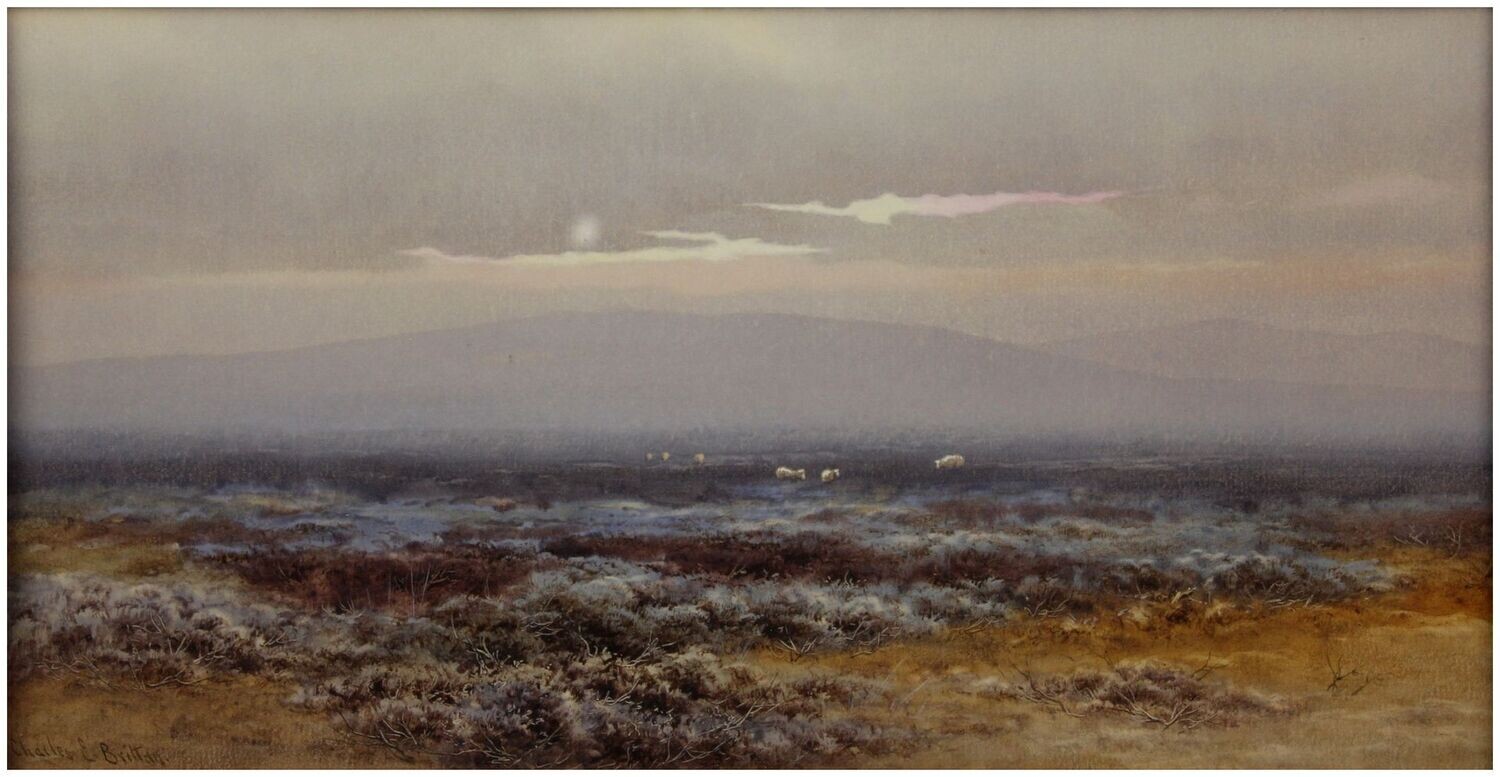Brittan, Charles Edward Jun. (1870-1949), Hochmoorlandschaft im Nebel
Charles Edward Brittan jun.(1870 Plymouth - 1949). Hochmoorlandschaft im Nebel. Gouache, signiert unten links "Charles E. Brittan", 18 x 34,5 cm (Passepartout Innenmaß), 45 x 62 cm (Rahmen). Unter Glas gerahmt.
- Die Welt als transzendente Erscheinung -
Der Betrachter blickt wie in einer Weitwinkelperspektive auf die Landschaft. Dabei weitet sich der spärliche Bewuchs des schottischen Hochlandheidekrauts - gleichsam stellvertretend für das Sehfeld - keilförmig in das Bild hinein, um die Bildgrenzen sogleich seitlich zu übersteigen. Durch diese Weitung des Blicks wirken bereits die Gegenstände des allernächsten Vordergrundes entfernt, obwohl sie vor der zusehends diffundierenden Landschaft beinahe greifbar scheinen. Der perspektivisch erwirkte Entzug verleiht der Landschaft einen visionären Charakter, der durch die bläulichen, sich bis in den Vordergrund hinein verbreitenden Nebelschwaden ebenso verstärkt wird wie durch die Schafe, die sich mit zunehmender Entfernung zusehends als visuelle Anhaltspunkte verlieren. Dieser visionäre Zug kulminiert schließlich in der Erscheinung der langgezogenen, weich geschwungenen Bergsilhouetten und den sich darüber offenbarenden Lichtphänomenen, die ebenso nahe gegenwärtig wirken wie der diffundierende gelb-brauntonale Vordergrund.
Auf kongeniale Weise setzt Charles Edward Brittan hier Bildideen der Romantik um, die Caspar David Friedrich in seinen, die Landschaftsmalerei auf ein ganz neues Niveau hebenden metaphysischen Landschaftsbildern entwickelt hat. Der in das Bild hineingerichtete Blick verschwimmt, damit sich aus dem der visuellen Wahrnehmung jenseitigen Bereich heraus etwas an der Grenze der Wahrnehmung zu formieren vermag, das eine Ahndung der übersinnlichen Sphäre eröffnet.
zum Künstler
Charles Edward Brittan wurde von seinem gleichnamigen Vater ausgebildet und malte vor allem Landschaftsbilder und Tierdarstellungen, war darüber hinaus aber auch als Illustrator tätig. Vorwiegend in Devon ansässig, schuf er dort seine besonders geschätzten Ansichten des Dartmoores, dessen vielfältige charakteristische Atmosphäre er bildlich einzufangen verstand.
Auswahlbibliographie
Huon L. Mallalieu: The dictionary of British watercolour artists up to 1920, Woodbridge 1976.
Melissa Hardie (Hg.): Artists in Newlyn and West Cornwall. 1880 - 1940, Bristol 2009.

